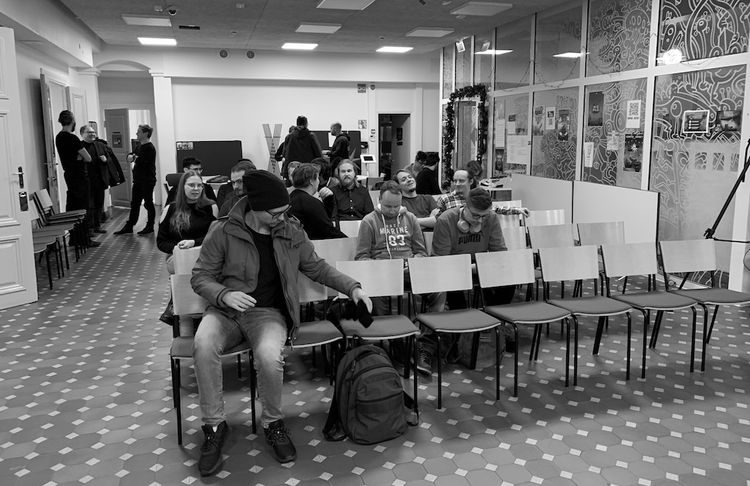EGD 070: Jörgen Larsson, Stillfront Group

Today I’m talking with Jörgen Larsson, the Founder and CEO of Stillfront Group. Jörgen has been an entrepreneur in gaming for a few decades. He has seen all the angles and aspects to creating value in gaming, and how to build long lasting value in the ever-changing market of video games. We’ll now hear more from Jörgen himself.
Main takeaways
Two roads that lead to the forming of Stillfront
First, Jörgen has a passion for building businesses. He has founded four companies in his career.
Second, he loves games and believes there’s so much to be explored in online and internet related gaming.
How did the roll-up model come together?
The reason came up from working on gaming for several years, trying to find games that would work. Online services and internet based games were picking up, but it was hard to build successful games.
The roll-up strategy was a counter-argument for people who were talking about making hit games.
“Way back then everybody I met that was talking about I should do the largest game in the world. And that’s a great ambition. I love ambition. But if you look at the risk reward in aiming that high, why should you because already fairly successful fully digital distributed products are very profitable if you can manage them as an asset and continue to develop that with good content and make it relevant for the consumer. “
Can you split this journey into different areas and how could you describe those different areas?
1) 2010-2015: before Stillfront went public, lots of fundamentals had to be in place. All the bits and pieces for the strategy needed to work, incl. how the company should upgrade its processes as there would be growth.
2) 2015-2019: Building a platform, the best home for the best talent in the industry. This way, Stillfront could attract successful and experienced studios to join, and to elevate their business.
3) 2019 to now. Building volume, understanding the commercial advantages, taking the business to a new level.
“We went out in November 2019 and said that we should take it, we should at least make them from three times what it was 2019 Within the next coming years, and we have actually been able to double it in six months. So we’re, we’re on to a good start on that. “
The vision is to have “high growth from being one of the market leading Free-to-Play powerhouses.”
What contributed to you building the platform at Stillfront?
There was an understanding for decentralization.
“If you cannot draw synergies between the different if there’s no value add in belonging to the same group, it’s only financial construction and that that will never last as something that is shining and beautiful in 15 years time. “
“It needs to be something that actually for every game team, for every marketing guy, for the artists, for the people that actually do the stuff in our company, creates the game and operates the game, that for their everyday work, it should be a value add that Storm8, Candywriter, Kixeye and so on had joined the group otherwise there is no sustainable value in in our in our design. “
Decentralization and centers of excellence:
“We would like to have maximum freedom, because we take a big bet on these game teams. They are the heroes, they know how to turn creativity into business.”
“What I offer them is just a higher probability to develop their studios, their games better being in the group. So building that, it takes some time. What we did to identify which areas to refine the format of how these, in this case, Centre of Excellence should be part of the platform. “
“My ambition is to create a modern company. I mean, the modern company is so decentralized. It has the ability to empower individuals to maximum. I mean these are multi-dimensional knowledge workers that cooperate to create the magic in our games and to make them relevant for a long time.”
Future of M&A, lots of competition in M&A. How will Stillfront operate and differentiate in the future?
“We’re not buying companies in the traditional way. And, again, this stems from mistakes I’ve made in the past. So the first company I had, we bought companies now we integrated in a more traditional way that that is not a good way of doing it.”
“If you’re still, as a team, hungry for further success, hunger for taking your studio to the next level. You’re already good. You have had successes, hopefully one or two mishaps or challenges as well because then you’re about the business builder. If you can see and we can see mutually that If you’re inside, acting on this platform that Stillfront is, then you will develop better. If you would like to take on the responsibility and the accountability for taking your studio to that level, then we might be the best possible [option]. “
Continuing on a decentralized model. What do you want to decentralize and what to leave out?
“The philosophy is: we don’t centralize.”
“The tricky thing is how should you still find the synergies and actually deploy synergies? And that’s why we develop the Centre of Excellence thoughts. And also we have different layers of cooperation creating centers. So we have currently 52 projects running between the 14 studios, and it’s scaling exponentially with each studio we get in. But it’s not because I forced them. It’s just because we show what the other studios can do and what they can help with and then the projects start to get going. “
“On the third level is just the exchange of knowledge and experience. And so we have… we work with different channels, Slack channels and other channels between different areas. We have something called StillBase, which is a knowledge base that is common for every… every individual can go in and look for other people in the same… who is working with monetization in Bucharest for instance, or immediately finds that guy and can establish contact, getting into dialogue. “
How to manage a culture of a dozen unique cultures?
It’s all about people.
“It’s so clear that what drives this is talent and people. If you can create a platform where the talent feels empowered, where talent gets access to other talent. If you’re a game designer and can talk to three other designers just freely and openly and it’s not going to a conference where you get this not completely transparent view of things. This is the true picture. So that will lead to an attractive place to be for talented people. The most attractive hopefully. “
“[But] we are brought up in different cultures, there are differences that need to be there. But if we can identify some common things, being open, being humble is very important. We love studios that aren’t only 10 successes and no failures. They should have had failures. Then you become more observant on risk, you become significantly more humble.”
How does Stillfront use capital allocation levels like cash, dept, equity and dividends?
“For me, it’s hard to understand why you should pay dividends, because then you believe that the shareholder could expect that they should put the money elsewhere. So it’s not the perfect way of viewing your own opportunities to create value for that capital. So we’re far from making dividends. Then of course, as this industry is more mature, structured and consolidated, it might be different in the future. But here and now, we are in investment mode.”
“If you go to the debt markets, it’s not possible to do volatility. So we were very early on already in 2017, to go out with their corporate bond, which is a separate traded security. I expected that it would be something very valuable, as I saw how we should develop the company, because then we can work with financial leverage, but you need to have a certain volume and the stability and predictability in place. Otherwise, the financing will be very expensive. “
Your role at Stillfront?
“I work a lot with the business building. And what is that? Well, it’s just to go together with the team that we are now eight, nine people in the management to figure out what steps we should take this year and how we should prioritize between different things.”
“Should we go into that market? Should we strengthen our global distribution capacity?”
“We optimize that portfolio, I work a lot with that”
“But also to see that our system develops a lot and that might sound a bit fluffy, but it is quite hands on when you sit in it every day. “
“M&A is very important for us and hence an important thing for me but to discuss some of the driving and developing our roadmap for going forward.”
How does Stillfront scale from here?
“Of course, a large deal five years ago is obviously not large today.”
“We have three types of acquisitions:”
100m+ a year
20m to 100m a year
Asset acquisitions, with or without teams.
“It could be assets with a team, assets without a team, but I think that we can do so much more. We have seen many opportunities with great products, high quality, well-ran products, great gaming teams, but we didn’t share the view on the priorities for that studio, so then we have just left that, with one exception, because Kixeye actually was more of that, even though quite large scale.”
What is different in gaming M&A that wouldn’t be on the table at i.e. Berkshire Hathaway?
“[Games are a] complex product. If you have a good game, I mean, the creativity and the innovation. It’s a high degree of technology. It’s art style. I mean, it’s a quite complex product to bring together a good high quality game. “
“Gaming teams should have the room, they should be empowered. They should be provided with ideas and others ideas to make the job even better.”





